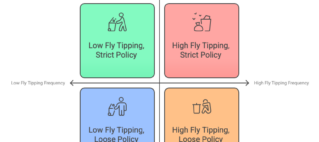Growing up in the business world is an incredible thing.I started out naive and super enthusiastic wanting to change the world. Very quickly the world fought back and changed me.
Thirty years on, I look back and answer that question we all get asked: “What would you do differently, if you could do it all over again?”
My answer is the same as everyone else’s: “I would do it all the same again!” – BUT – and here is the rub, “I would have loved to do it all again with some guidance from the people who came before me.”
Of course I had guidance, mentors and role-models. The thing is I had to figure out who they were, what was good about them and what I should try mimic, improve or discard. I had no model for figuring things out or seeing things from a different point of view. The models are there, they have always been there but I have either disempowered myself or been disempowered by the creators of these models.
Disempowerment is a funny thing, it happens when the barriers to entry or understanding are raised to a point where they exclude all but the very persistent and extremely hardy. Early doctor handwriting and Latin scripts kept us mere mortals from interacting with a doctor or pharmacist. Engineers have their models, the lean movement post WW2 have their language and every which way we turn we are bombarded with someone else’s ‘expert’ model or system that they want us to learn, use and ultimately replace our existing systems with.
It is this replacement of your systems that destroys value in your organisation (see Article Here.) A better way to benefit from all these systems and models is to use them as a filter for your organisation. It’s a bit like wearing sunglasses – you get to look in the direction of the sun and see things which would have been impossible to see without the sunglasses. It doesn’t change the reality, merely enhances what I know about it.
If I apply this ‘sunglass’ thinking to a model of an organisation, say for example Stafford Beer’s Viable Systems Model which gives us 5 systems that he believes should be present in any organisation for it to be viable, do I then need to throw out all the other views we have of our organisation? Does this model even help us in any way?
Just like the engineers who constantly improve designs, I believe we as leaders and managers need to use the models that enhance our knowledge NOT replace our knowledge. Clearly the innovators and paradigm shifters could be ready to move on and discard this notion as nonsense, however even innovation and paradigm shifting needs a view, albeit an alternative view, to start from. If you can show the progression from a bad state to a good state and then maintain that good state using a different set of sunglasses then you have successfully used someone else’s model to enhance your organisation and world.
At the same time the creators of models and systems have a responsibility to ensure that their model is not the ultimate solution (we all know there is no ultimate solution) but rather the building blocks of a very customised experience for the potential ‘wearer’ of the new system.




